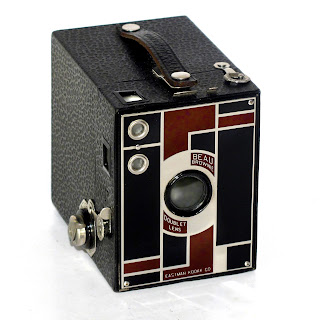19.
THE MAGIC LANTERN - An old name for picture projecting devices
Common
portable oil lamps were in the 18th century simply called “lanterns”.
This optic origin to the colour slide projectors felt somewhat “magic” in those days.

I believe this hand painted picture on a somewhat broken glass is about 200 years old.
They were exhibited by travelling vaudeville shows or entertainers in fairgrounds.

I believe this hand painted picture on a somewhat broken glass is about 200 years old.
Parlour lanterns often used all kinds of additional movable glass slides to make it more exciting.
Many different mechanical tricks were invented.
This picture was probably completed with another movable slide painted with clouds and rain to enhance the experience.
With a safer (electric) light source this was my favourite toy in my childhood.
How did this monster work?
A strong light source and an oversized lens system were needed in the early years when this projector was built. The lamp house was like an oven. Originally made for Limelight (an oxygen-hydrogen flame directed at a cylinder of calcium oxide). This kind of bright light also meant a very strong heat, hence the chimney.
The pictures are copies from biblical wood engravings by Gustave Doré, colourised by less skilled people. Some of my remaining pictures probably originated from a travelling Christian evangelist.
Setting up a typical gas driven projector in a chapel.
The slides had wooden frames to avoid burning any fingers.
The slides had wooden frames to avoid burning any fingers.
The standard 8x8 cm glass pictures were swiftly changed by an invention made by Beard Eclipse.
The new slide is simply pushed in front of the old slide, and when the old is pulled out the new automatically get moved into focus. Ingenious!

Here I have chosen these three old pictures from a sequence meant for the Temperance movement.
But to a young boy they felt like the Chaplin movies I knew from the cinema matinées. So typical British and that era.
In fact my big projector was made in London by John Wrech & Son, who also introduced a Cinematograph as early as 1897. That was only two years after the official birth of moving pictures. Amazing!
I still think that all these ancient pictures can make me feel like travelling into the past.
As a very old man it is nice to have most of them around just for my own entertainment.




































